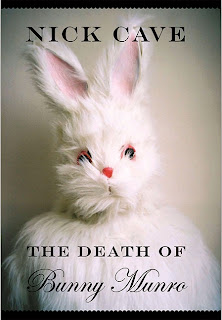You’re probably more familiar with Bertrand Russell as the author of flimsy works of pulp fiction such as An Introduction to Mathematical Philosophy or The History of Western Philosophy, so brace yourselves. Lord Russell’s collection of short stories (I know, right?) was written when he was eighty, and makes for an interesting read.
Satan in the Suburbs is the title of the collection and of the longest of the five stories it contains. The story deals with Dr Murdoch Mallako, whose house in the suburbs bears a brass plaque which reads ‘Horrors Manufactured Here’. For a fee of ten guineas an hour, the discerning client can emerge ashen-faced from the doctor’s study and likely as not pass out on the pavement. This rapidly becomes a good old-fashioned mystery, with the narrator attempting to uncover Dr Mallako’s activities as his ‘patients’ meet various grisly ends.
Although he denies it in his preface, Russell’s stories do bear a strong moral slant. ‘Satan in the Suburbs’ is all about the way in which respectable individuals can fall victim to the power of suggestion in their quest to satisfy greed and lust. All it takes is a tempter.
The other stories follow similar courses, often with the protagonist making a horrifying discovery and then being forced to choose from a variety of unpalatable actions. Of course, this is the essence of a good story, and perhaps it is just Russell’s background that makes these aspects seem so prominent. Sometimes suicide is the only way for a character to maintain their honour and dignity; sometimes a lie can become so deeply ingrained that it becomes the truth. These are the sorts of themes which Russell addresses without ever making them seem too serious. These are works of fiction after all.
They do sometimes feel a little contrived though, perhaps because the plot and the psychological ordeal of the protagonist are so clearly visible, and the moral message is not-too-subtly delivered. But for a first-time storywriter – even an octogenarian one - these are just teething problems in an entertaining collection.
Russell’s writing is often remarkably incisive, particularly when he is aiming a sideswipe at rigid political or religious values, the kind of ‘stern devotion to moral principles which enables men to inflict torture without compunction.’ But he is also – and this is my personal favourite – just as acerbic about a small East Anglian town, the proud owner of ‘a railway station from which (it was said) persons of sufficient longevity might hope to reach Liverpool Street.’
So, although there are similarities between some of the stories, there is certainly enough wit, adaptability and insight to make up for it. And if there is a moral in this collection, behind the murder, insanity and international scheming, it comes from the last sentence of the last story: ‘And they lived happily ever after.’ Through it all, happiness prevails – albeit with a tinge of unreality.


